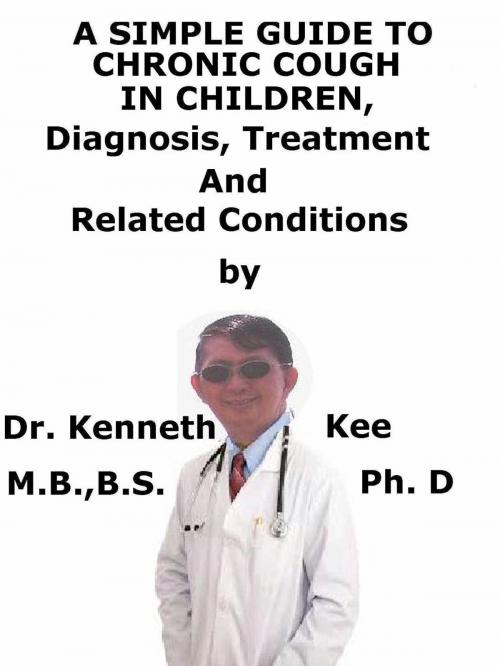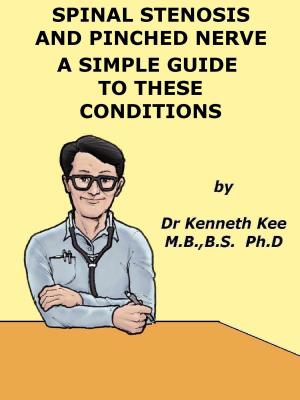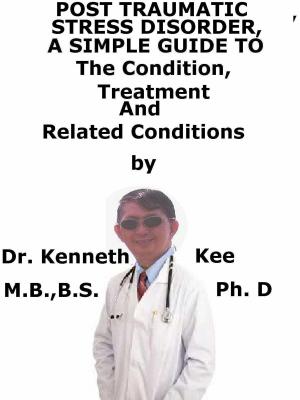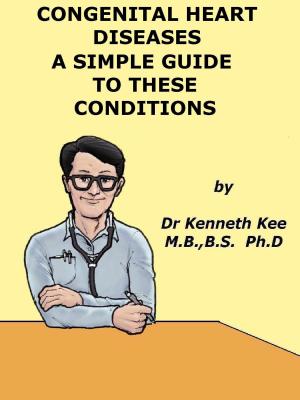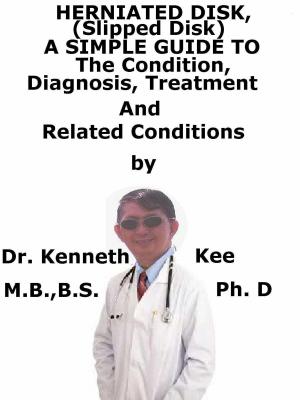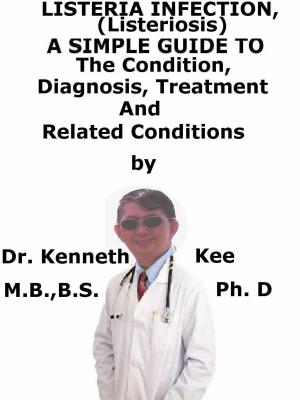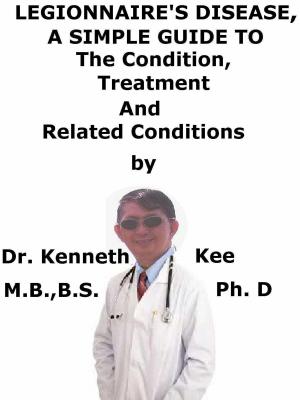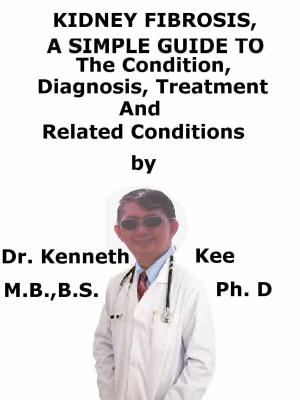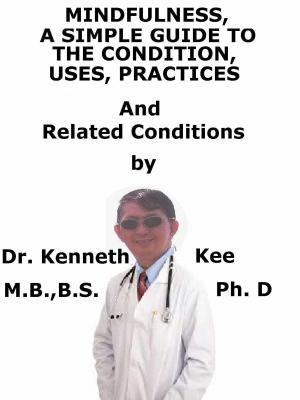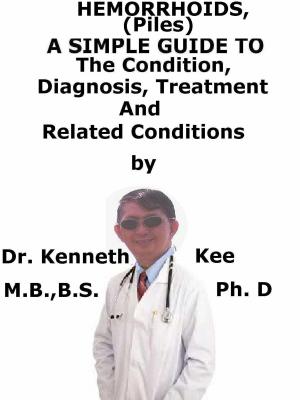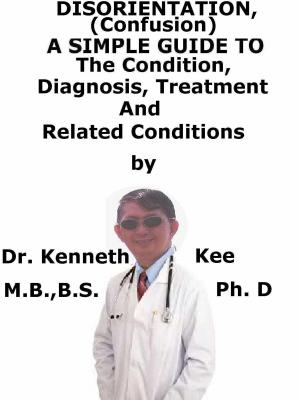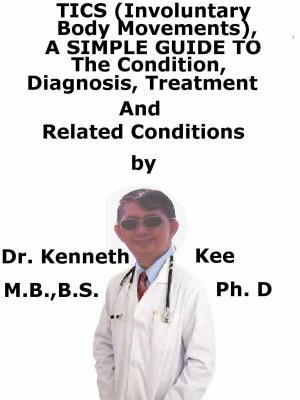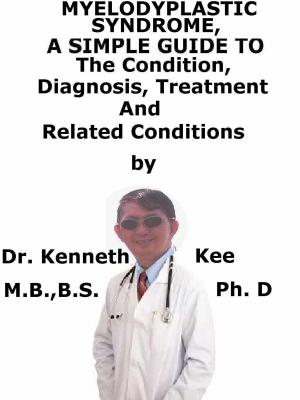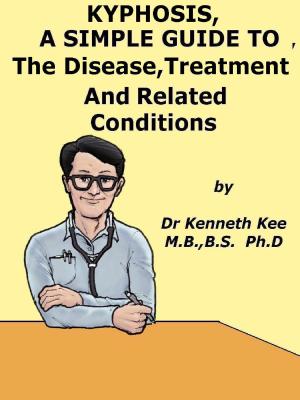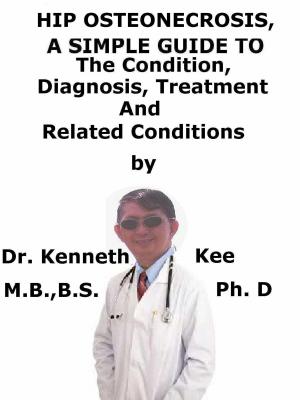A Simple Guide To Chronic Cough In Children, Diagnosis, Treatment And Related Conditions
Nonfiction, Health & Well Being, Medical, Specialties, Pulmonary & Thoracic, Health, Ailments & Diseases, Respiratory| Author: | Kenneth Kee | ISBN: | 9781386114260 |
| Publisher: | Kenneth Kee | Publication: | June 7, 2018 |
| Imprint: | Language: | English |
| Author: | Kenneth Kee |
| ISBN: | 9781386114260 |
| Publisher: | Kenneth Kee |
| Publication: | June 7, 2018 |
| Imprint: | |
| Language: | English |
This book describes Chronic Cough In Children, Diagnosis and Treatment and Related Diseases
Chronic Cough in Children is very commonly seen at the family doctor clinic.
Up to 7-10 % of preschool and primary school children may have chronic cough without wheeze at some time.
Cough in children may occur from causes anywhere along the airway, from the nose to the alveoli.
Cough is a non-specific reaction to irritation anywhere from the pharynx to the lungs.
Childhood coughing is a frequent disorder that can cause anxiety in parents.
There are significant differences from adult cough in terms of possible causes and treatment guidelines.
Chronic cough in children is described as a cough that last longer than eight weeks.
This time period is used because most acute infective causes of cough will recover in 3-4 weeks, and the eight-week definition identifies those who may require more investigations.
Occasionally post infective cough may persist longer (3-8 weeks) as in the case of pertussis or post viral cough.
Chronic cough may be classified as:
-
Specific cough (in which there is no identifiable cause)
-
Non-specific cough (persistent isolated dry cough in otherwise well children with no signs of respiratory disease and normal investigations)
The three most frequent causes of chronic cough in adults (asthma, postnasal drip syndrome and gastro-esophageal reflux) are not always the most frequent in children
Isolated cough is now thought to be abnormal as a manifestation of asthma in children, which normally is linked with other presenting symptoms.
Investigations are CXR and spirometry
Frequent causes in primary care
-
Infections (or recurrent infections) - including respiratory syncytial virus (RSV), adenovirus, Mycoplasma pneumoniae, chlamydial pneumonia, whooping cough (pertussis) and tuberculosis.
-
Asthma.
-
Postnasal drip syndrome.
-
Environmental agents - tobacco smoke, possibly charcoal or kerosene heaters.
-
Gastro-esophageal reflux.
Further investigations:
-
Sputum sample if possible - for microbiology and cytology.
-
Allergy testing (skin prick or radioallergosorbent test (RAST) specific testing) may help if atopy/asthma is likely diagnoses.
Treatment
This is dependent on any specific cause found.
-
In a well child with no 'red flags', the doctor should aim to prevent invasive investigations and to reduce the expectations and anxieties of parents.
-
Persistent cough produces a significant load in terms of repeated treatments and parental anxiety.
-
Environmental contributions should be removed if possible - e.g., tobacco smoke.
No treatment has been discovered to be especially effective for isolated nonspecific cough in an otherwise well child.
Reassurance is essential, and it will normally subside over time.
Anti-tussive drugs, other than simple cough linctus, are not normally advised.
If the patient has seasonal allergies, such as hay fever, the child should:
-
Stay indoors during days or times of the day (normally the morning) when airborne allergens are high.
-
Keep windows closed and use an air conditioner.
-
The child should not use fans that draw in air from outdoors.
-
Shower and change the clothes after being outside.
This book describes Chronic Cough In Children, Diagnosis and Treatment and Related Diseases
Chronic Cough in Children is very commonly seen at the family doctor clinic.
Up to 7-10 % of preschool and primary school children may have chronic cough without wheeze at some time.
Cough in children may occur from causes anywhere along the airway, from the nose to the alveoli.
Cough is a non-specific reaction to irritation anywhere from the pharynx to the lungs.
Childhood coughing is a frequent disorder that can cause anxiety in parents.
There are significant differences from adult cough in terms of possible causes and treatment guidelines.
Chronic cough in children is described as a cough that last longer than eight weeks.
This time period is used because most acute infective causes of cough will recover in 3-4 weeks, and the eight-week definition identifies those who may require more investigations.
Occasionally post infective cough may persist longer (3-8 weeks) as in the case of pertussis or post viral cough.
Chronic cough may be classified as:
-
Specific cough (in which there is no identifiable cause)
-
Non-specific cough (persistent isolated dry cough in otherwise well children with no signs of respiratory disease and normal investigations)
The three most frequent causes of chronic cough in adults (asthma, postnasal drip syndrome and gastro-esophageal reflux) are not always the most frequent in children
Isolated cough is now thought to be abnormal as a manifestation of asthma in children, which normally is linked with other presenting symptoms.
Investigations are CXR and spirometry
Frequent causes in primary care
-
Infections (or recurrent infections) - including respiratory syncytial virus (RSV), adenovirus, Mycoplasma pneumoniae, chlamydial pneumonia, whooping cough (pertussis) and tuberculosis.
-
Asthma.
-
Postnasal drip syndrome.
-
Environmental agents - tobacco smoke, possibly charcoal or kerosene heaters.
-
Gastro-esophageal reflux.
Further investigations:
-
Sputum sample if possible - for microbiology and cytology.
-
Allergy testing (skin prick or radioallergosorbent test (RAST) specific testing) may help if atopy/asthma is likely diagnoses.
Treatment
This is dependent on any specific cause found.
-
In a well child with no 'red flags', the doctor should aim to prevent invasive investigations and to reduce the expectations and anxieties of parents.
-
Persistent cough produces a significant load in terms of repeated treatments and parental anxiety.
-
Environmental contributions should be removed if possible - e.g., tobacco smoke.
No treatment has been discovered to be especially effective for isolated nonspecific cough in an otherwise well child.
Reassurance is essential, and it will normally subside over time.
Anti-tussive drugs, other than simple cough linctus, are not normally advised.
If the patient has seasonal allergies, such as hay fever, the child should:
-
Stay indoors during days or times of the day (normally the morning) when airborne allergens are high.
-
Keep windows closed and use an air conditioner.
-
The child should not use fans that draw in air from outdoors.
-
Shower and change the clothes after being outside.
